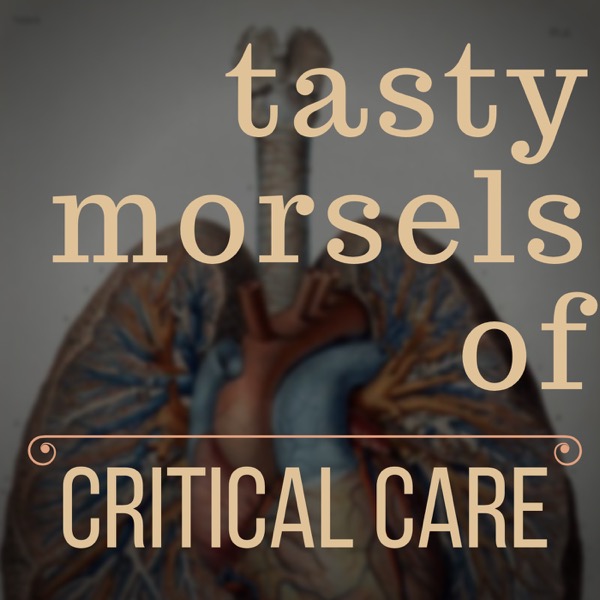Tasty Morsels of Critical Care 029 | Clostridium Difficile
Tasty Morsels of Critical Care - A podcast by Andy Neill - Mondays

Welcome back to the tasty morsels of critical care podcast. A meandering monologue through critical care fellowship exam preparation. We see C. Diff in the ICU in a couple of contexts. Firstly the poor unfortunate soul who starts with a benign illness and gets some antibiotics and develops a fulminant colitis and shock needing colectomy and an ICU admission. Secondly we have the frequent dilemma of the prolonged ICU patient who is collecting complications like they’re merit badges. They’ve developed new shock and there’s some diarrhoea and you’re worried about c. diff. First off some risk factors. Firstly is antibiotic exposure and topping the list would be beta-lactams and clindamycin, closely followed by the quinolones, aztreonam, and the carbapenems. A truncated list of patient specific risk factors might go as follows: * age >65y * previous GI surgery or IBD * renal impairment * prolonged hospitalisation esp with a C. diff contact * gastric acid suppression (though PEPTIC trial would suggest against this is unlikely, or at least not more likely than H2RA. However I still think it’s a fair answer in an exam) * immunocompromised and chemotherapy patients There are a few useful principles of prevention: * Hand washing – remember that spores survive alcohol and on surfaces, need soap and water * Isolation * Testing of symptomatic individuals * avoidance/minimising antibiotics * Limit PPI use and get NG tubes out ASAP In terms of diagnosis we’re typically thinking of this in patients with diarrhoea. We send a stool sample and wait patiently by the computer for a result. But what are we actually testing? This will of course depend somewhat on your local lab but there are a few important principles. Most of the time we’re testing for a toxin produced by the bacterium. This can be toxin A or B or both. If both are +ve then cool cool cool you’ve probably got your diagnosis. If you’ve got one +ve and one -ve then IDSA recommends using nucleic acid amplification (or PCR if you like) as a tie breaker. The PCR is very very sensitive. And the issue is that the presence of c diff DNA in your poo doesn’t necessarily imply disease whereas the combination of symptoms a +ve toxin immunoassay and a PCR is much more compelling. An important component of the diagnosis involves some form of mucosal assessment – especially in more severe cases. This can be some form of flexible boweloscopy device or a CT scan looking for colitis or mega colon. Once you’ve made your diagnosis you’re ready to start some treatment. This can be very confusing as treatment is not only determined by severity grade but the recommendations have changed relatively recently (in 2018) so the stuff you learnt for your membership examinations may no longer be relevant. The split here is into non severe, severe and fulminant so keep that in mind. The split between non severe and severe, is defined by a WCC<15 and a normalish creatinine. This distinction would seem an important thing to memorise, however as far as I can work out, IDSA suggests identical treatment for both non severe and severe. Namely * Vance 125mg PO QDS OR fidoxamicin * note that metronidazole PO is no longer recommended the way it was in the mid noughties when I started. Fulminant disease is primarily determined by shock and the presence of megacolon. This probably is something worth remembering as treatment here is significantly different. Here you give vanc 500mg PO QDS plus metro IV (which after being given IV is secreted unchanged into the GI tract via the biliary tract). For those with nasty distal disease vanc enemas can also be used which will certainly make you super pop...
